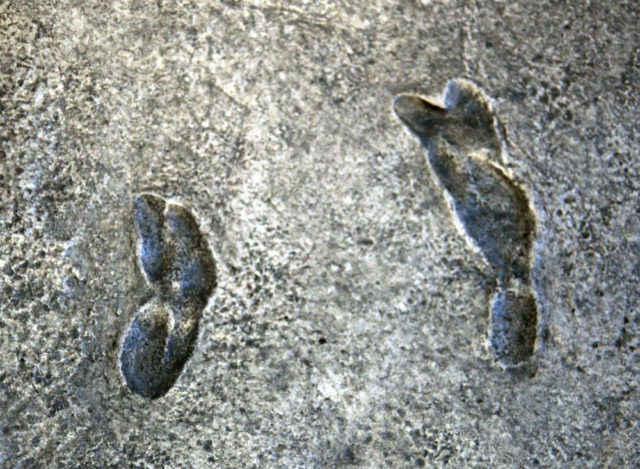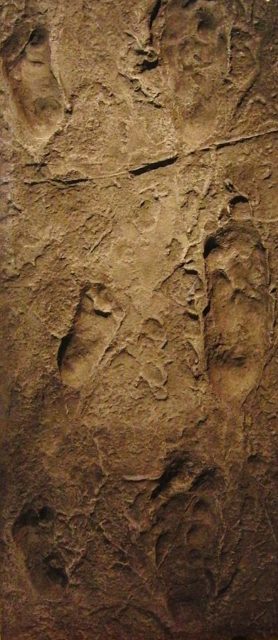Over and over again the established narratives of early human evolution get challenged by new discoveries. Such was the case earlier in 2017 when human fossils excavated at Morocco’s Jebel Irhoud site turned out to be 100,000 years older than the previously oldest-known remains found in Ethiopia.
The fossil discovery was major, and it shook the basis of the human-evolution narrative, providing factual evidence that modern humans did not originate 200,000 years ago in the eastern parts of Africa. One more discovery, but this time of footprints bearing a human-like form, found in the western parts of Crete, further questions the chronology of the evolution narrative.
The Trachilos footprints, as they are designated, are the subject of the freshly published study Possible Hominin Footprints From the Late Miocene (c. 5.7 Ma) of Crete? which is authored by a group of international researchers. According to the study, the prints are roughly 5.7 million years old, and they are unusual for their notable human-like features, suggesting their maker was probably walking upright.
It was Gerard Gierlinski, lead author of the study, who accidentally stumbled on the prints while staying on Crete for a vacation in 2002. A distinguished paleontologist from Poland, Gierlinski initially did not believe the footprints belong to hominins. The conclusion was reached when he came back to the site in 2010 along with another Polish paleontologist, Grzegorz Niedzwidzki, one of the study’s authors.

The genuine form of the prints is composed of a rather large sole, five toes, and there’s no evidence of any claws. The big toe is particularly interesting as its appearance, size, and position are quite similar to modern humans. The “ball” of the sole is further distinguishable as another feature that appears among hominins and not apes.
Way more curious is the fact that the age of these traces could serve as proof that human-like creatures were already walking upright in Europe 5.7 million years ago, when distant relatives in Africa still struggled with their ape-looking feet.
That certainly complicates our understanding of the early days of human evolution, as the beginning to walking upright wasn’t considered to have occurred until roughly 4 million years ago. Even the abstract of the study itself implies that “the interpretation of these footprints is potentially controversial.”
“The tracks indicate that the trackmaker lacked claws, and was bipedal, plantigrade, pentadactyl and strongly entaxonic,” reads the abstract. What the study floats as an idea is that there was likely another, previously not identified kind of primate, who roamed the Earth ages before we previously thought was conceivable.
From other evidence that we have at our disposal, and which has largely helped us built the narrative of how and when humans started walking, the Australopithecus fossils were unearthed in the southern and eastern parts of Africa.
We cannot forget the 3.7 million-year-old footsteps belonging to early hominins located in Tanzania, which is one more early proof of upright walking. The Tanzanian footprints, known as the Laetoli, are attributed to the hominin genus Australopithecus and are notable for their thin heel and loosely defined arch.

Other findings, those of 4.4 million-year-old footprints unearthed in Ethiopia, are thought to have belonged to the Ardipithecus ramidus. Their shape and look resemble those of an ape rather than a human.
Read another story from us: Footprints of a Mesolithic hunting party found on the coast of Wales
Against all the odds, the Trachilos footprints of Crete look way more human-like than those of the Ardipithecus, despite being over a million years older.
The study does not leave out the option that the trackmaker may have been somebody belonging to the Hominini family, but what makes the puzzle more perplexing is that Crete is outside the known geographical extent of the pre-Pleistocene hominins.
That is one of the reasons why there is an open space to speculate whether the tracks were left by so far unknown human-like creature who may have evolved to have foot anatomy similar to that of a human.
